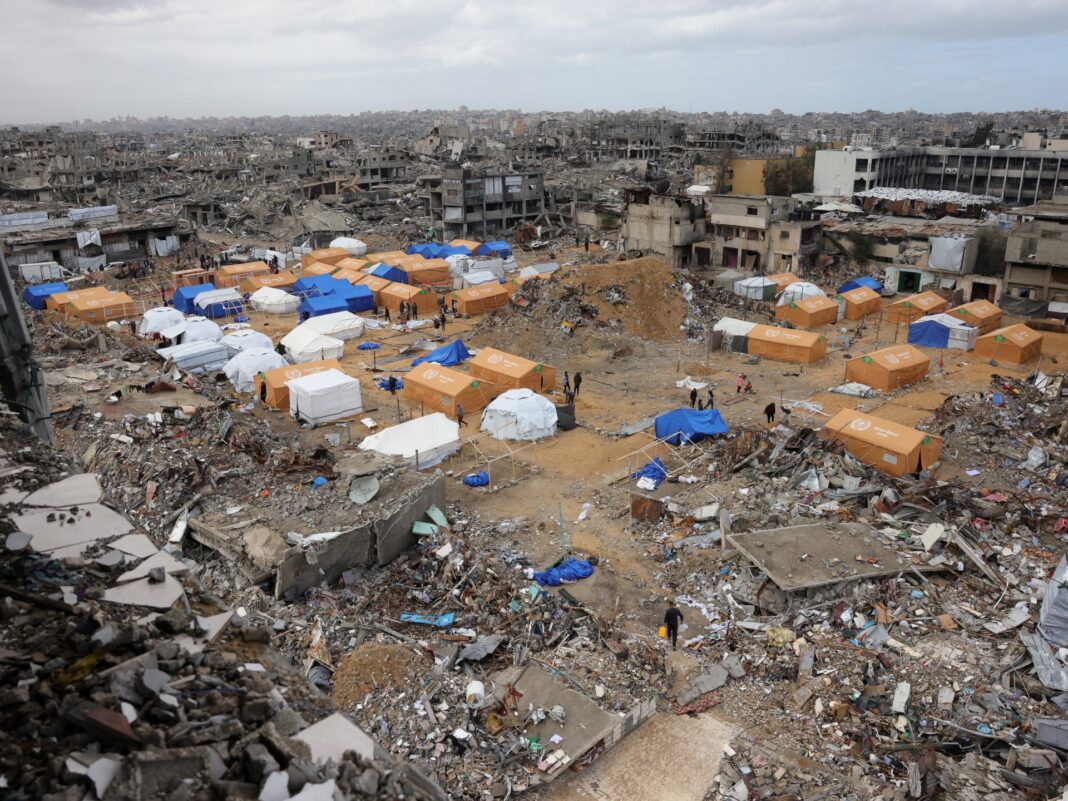Rubbish flooding the streets of Gaza City is creating new health risks, residents say.
Displaced Palestinians returning to northern Gaza have found once-bustling cities reduced to toxic wastelands, according to residents and aid agencies.
Shocked by the level of destruction, Gaza City residents are calling for action over a building sanitation crisis in the enclave’s largest city, Al Jazeera reported on Monday.
A scene of devastation has met those hoping to rebuild their lives in the northern reaches of the enclave, the focus of the most concentrated Israeli military action during the war. The dangers posed by damaged buildings are matched by missing public services and streets filled with heaps of rubbish.
Last month’s ceasefire deal prompted a rush by displaced people to return to the north. However, Gaza City remains without running water or reliable power.
Towns are lacking basic services like water and healthcare, said Tess Ingram of the United Nations Children’s Fund (UNICEF).
“They’ve been shocked by what they’ve returned to,” she said from Gaza City.
“They had hoped that their homes, their neighbourhoods, their communities maybe had been spared. And as they come back here and realise that’s not the case, the hope they’ve been holding onto for 15 months crashes.”
Families returning to northern #Gaza are shocked by the scale of destruction.
UNICEF’s Tess Ingram shares the reality on the ground and the immense challenges people are facing. pic.twitter.com/IRYrN9AsNM
— UNICEF MENA – يونيسف الشرق الأوسط وشمال إفريقيا (@UNICEFmena) February 9, 2025
Mounds of toxic rubbish litter central areas of the city, including the business centre, amplifying the spread of disease.
“Accumulation of waste in the vicinity of hospitals gives rise to grave health risks, mainly the outbreak of diseases and epidemics,” said Amin al-Alia, a nurse at Ahli Hospital.
“It is extremely dangerous,” resident Ahmed Nasser told Al Jazeera. “We hope it is removed at the earliest possible time.”
“This area has turned as scary as haunted woods,” added shop owner Majid Bassam. “It is rife with insects, stray dogs, you name it. It is a vast area of wasteland.”
Heavy rain and strong winds in Gaza City and further north are worsening the suffering.
With shelter lacking, some have resorted to starting fires inside collapsed buildings for warmth, reported Al Jazeera’s Hani Mahmoud from Gaza City.
“There have been three documented cases of people dying under similar buildings that were collapsed in recent days,” said Mahmoud.
Hanan Balkhy from the World Health Organization (WHO) described people’s suffering in the war-racked enclave as “beyond comprehension” and called for accelerated aid operations.
The WHO is “ready to scale up our response” but urgently needs “systematic and sustained access to the population across Gaza, and we need an end to restrictions on the entry of essential supplies”, she said.
More than half a million Palestinians have returned to northern Gaza since Israel’s military partly reopened the Netzarim Corridor, which divides Gaza from north to south, for travel in late January.
On Sunday, Hamas said Israeli forces had fully withdrawn from the corridor as part of the ongoing ceasefire deal, enabling Palestinians to cross it without fearing military violence for the first time in more than a year.


